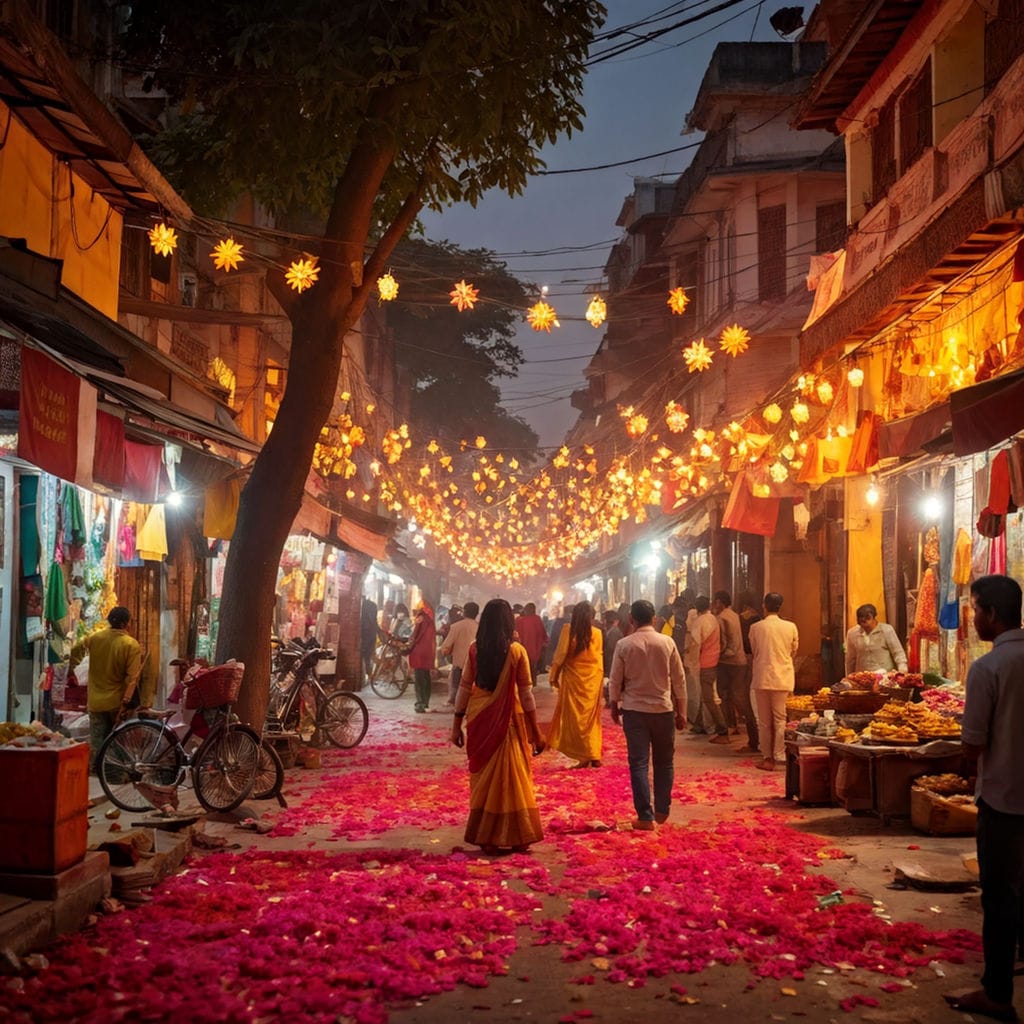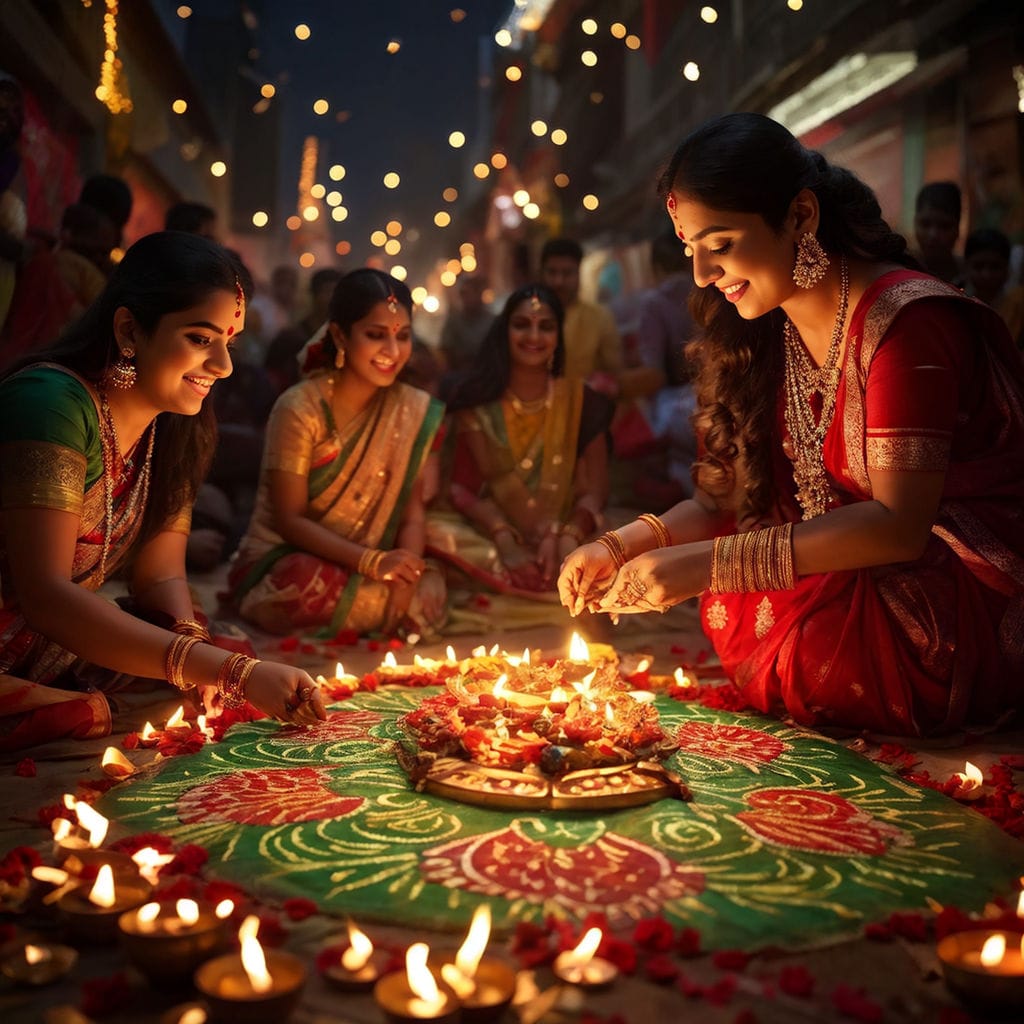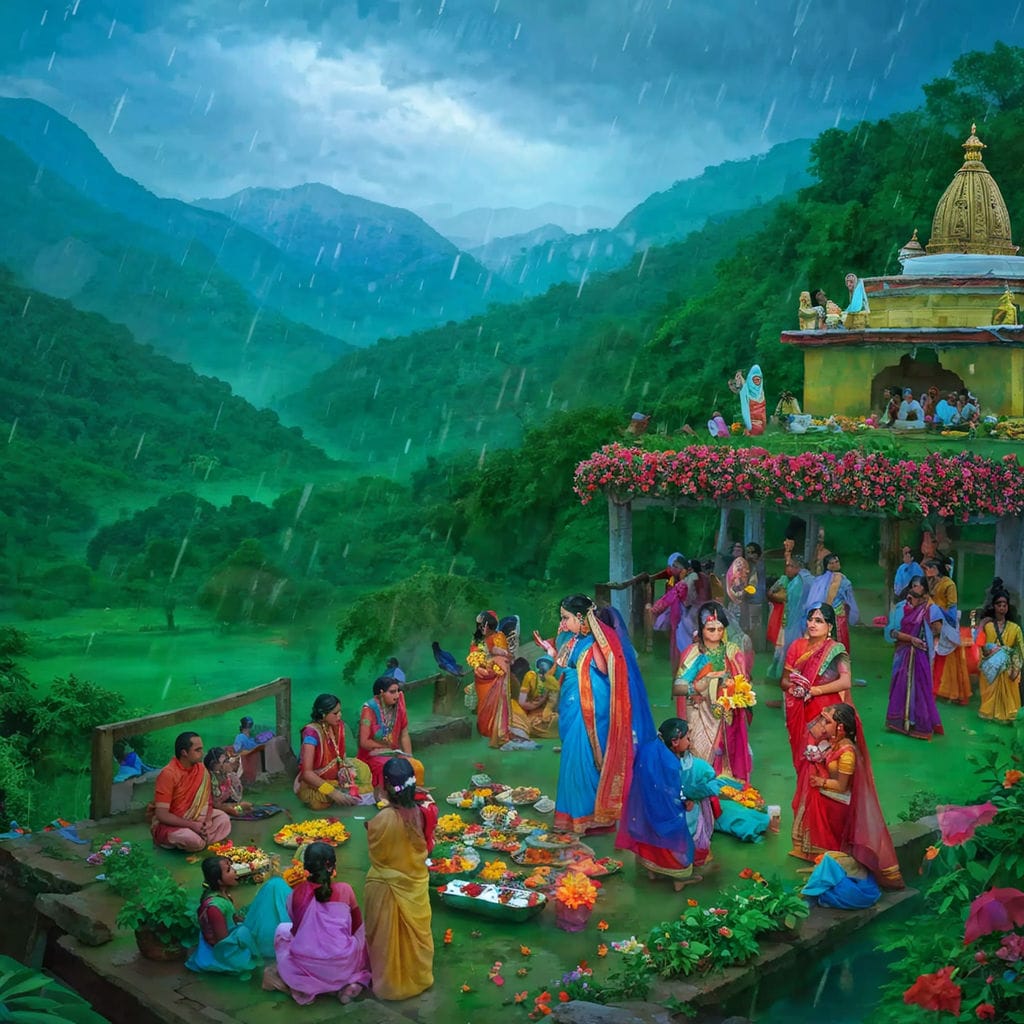Diwali 2024 Date and Time: Everything You Need to Know
Diwali, also known as Deepavali, is a major Hindu festival celebrated with great fervor and enthusiasm across India and among Indian communities worldwide. Often referred to as the “Festival of Lights,” Diwali symbolizes the triumph of light over darkness, knowledge over ignorance, and good over evil. The festival is marked by a variety of rituals, including lighting oil lamps, bursting fireworks, worshiping deities, exchanging gifts, and feasting on delicious sweets.
Dates for Diwali 2024:
Diwali spans five days, each with its own significance and set of rituals. In 2024, the dates for Diwali are as follows:
- Dhanteras: October 28, 2024
- Naraka Chaturdashi (Choti Diwali): October 29, 2024
- Lakshmi Puja (Main Diwali): October 31, 2024
- Govardhan Puja: November 1, 2024
- Bhai Dooj: November 2, 2024
Lakshmi Puja Muhurat:
The main day of Diwali, when Lakshmi Puja is performed, is considered the most auspicious. In 2024, the Lakshmi Puja Muhurat (the most favorable time for worship) is as follows:
- Lakshmi Puja Muhurat: 06:08 PM to 08:04 PM on October 31, 2024
- Pradosh Kaal: 05:33 PM to 08:08 PM
- Vrishabha Kaal: 06:08 PM to 08:04 PM
Significance of Diwali:
Diwali holds deep cultural, religious, and social significance. Each of the five days of Diwali has its own unique meaning and importance:
- Dhanteras (Day 1):

- Significance: Dhanteras marks the beginning of Diwali festivities. The word “Dhan” means wealth, and “Teras” refers to the thirteenth day of the lunar fortnight. On this day, people worship Lord Dhanvantari, the deity of health and medicine, and seek blessings for good health and prosperity.
- Rituals: It is customary to purchase new items, especially gold, silver, and utensils, on Dhanteras. Homes and business premises are cleaned and decorated to welcome wealth and prosperity.
- Naraka Chaturdashi or Choti Diwali (Day 2):

- Significance: Naraka Chaturdashi, also known as Choti Diwali, commemorates the victory of Lord Krishna over the demon king Narakasura. This day symbolizes the destruction of evil and the dawn of hope and happiness.
- Rituals: On this day, people take a ritualistic bath before sunrise, apply fragrant oils, and wear new clothes. Lamps are lit, and special sweets are prepared. In the evening, miniature earthen lamps are lit to dispel darkness.
- Lakshmi Puja (Day 3):

- Significance: The third day is the most important day of Diwali. It is dedicated to the worship of Goddess Lakshmi, the goddess of wealth, prosperity, and fortune. It is believed that Goddess Lakshmi visits homes that are clean and well-lit on this day.
- Rituals: Homes are decorated with rangoli, and entrances are adorned with torans (decorative garlands). During the evening, families perform Lakshmi Puja, worshiping the goddess with offerings of flowers, sweets, and prayers. Lamps are lit, and fireworks are burst to celebrate the victory of light over darkness.
- Govardhan Puja (Day 4):

- Significance: Govardhan Puja, also known as Annakut, celebrates Lord Krishna’s lifting of the Govardhan Hill to protect the villagers of Vrindavan from torrential rains sent by Lord Indra. This day signifies gratitude towards nature and the divine.
- Rituals: People prepare a variety of vegetarian dishes and offer them to Lord Krishna. In some regions, people create small hillocks made of cow dung, symbolizing Govardhan, and decorate them with flowers and food offerings.
- Bhai Dooj (Day 5):

- Significance: Bhai Dooj is a day dedicated to the bond between brothers and sisters. It is believed that on this day, Yama, the god of death, visited his sister Yamuna, and she applied a tilak on his forehead. Yama declared that any brother who receives a tilak from his sister on this day would be blessed with long life and prosperity.
- Rituals: Sisters apply a ceremonial tilak on their brothers’ foreheads and pray for their well-being and longevity. Brothers, in return, give gifts and promise to protect their sisters.
The Story of Diwali:
The celebration of Diwali is rooted in various mythological stories and legends. Here are some of the most popular ones:
- Return of Lord Rama to Ayodhya: One of the most widely known stories associated with Diwali is the return of Lord Rama to Ayodhya after a 14-year exile and his victory over the demon king Ravana. The people of Ayodhya lit oil lamps to celebrate Rama’s return, symbolizing the victory of good over evil and light over darkness.
- The Story of Lord Krishna and Narakasura: Another popular legend is the slaying of the demon king Narakasura by Lord Krishna and his wife Satyabhama. Narakasura had imprisoned 16,000 women and was causing havoc in the heavens. His death is celebrated as Naraka Chaturdashi, and it signifies the triumph of good over evil.
- The Birth of Goddess Lakshmi: According to another legend, Goddess Lakshmi, the goddess of wealth and prosperity, was born on the new moon day of Kartik month during the churning of the ocean (Samudra Manthan) by the gods and demons. Thus, Diwali is also celebrated as the birthday of Goddess Lakshmi.
- The Story of King Bali and Vamana Avatar: In some regions, Diwali is linked to the story of King Bali and the Vamana avatar of Lord Vishnu. King Bali was a benevolent demon king who was known for his generosity. To curb his growing power, Lord Vishnu took the form of a dwarf Brahmin (Vamana) and asked Bali for three paces of land. Vamana then grew in size and covered the earth, sky, and the underworld in three steps, thus humbling Bali. This story is particularly popular in South India.
Rituals and Celebrations:
Diwali is celebrated with a variety of rituals and customs that vary across regions. Here are some of the most common practices:
- Cleaning and Decorating:
- Significance: Cleaning and decorating homes and workplaces is an important part of Diwali preparations. It is believed that Goddess Lakshmi visits clean and well-lit homes, bringing prosperity and good fortune.
- Rituals: People thoroughly clean their homes, remove clutter, and decorate their spaces with colorful rangoli designs, flowers, and decorative lights. Entrances are adorned with torans and garlands made of marigold flowers and mango leaves.
- Lighting Lamps and Fireworks:
- Significance: Lighting oil lamps (diyas) and bursting fireworks are integral parts of Diwali celebrations. The light from the lamps symbolizes the victory of light over darkness and good over evil.
- Rituals: On the evening of Diwali, homes are illuminated with rows of oil lamps, candles, and electric lights. Fireworks and crackers are burst to mark the joyous occasion and to ward off evil spirits.
- Lakshmi Puja:
- Significance: Lakshmi Puja is the central ritual of Diwali, dedicated to the worship of Goddess Lakshmi. It is believed that performing this puja with devotion and sincerity brings wealth, prosperity, and good fortune.
- Rituals: The puja is performed in the evening during the auspicious muhurat. Families set up a clean and decorated altar with images or idols of Goddess Lakshmi and Lord Ganesha. Offerings of flowers, sweets, fruits, and coins are made. Prayers and hymns are recited, and special lamps are lit to invoke the blessings of the deities.
- Feasting and Sharing:
- Significance: Diwali is a time for feasting and sharing, symbolizing abundance and generosity. Special dishes and sweets are prepared and shared with family, friends, and neighbors.
- Rituals: Traditional sweets like ladoos, barfis, halwa, and kheer are prepared in households. Savory snacks like samosas, pakoras, and chaklis are also enjoyed. People exchange sweets and gifts, strengthening bonds of love and friendship.
- Shopping and Gifting:
- Significance: Shopping for new clothes, jewelry, and household items is a significant part of Diwali preparations. Exchanging gifts is a way to express love, gratitude, and good wishes.
- Rituals: People buy new clothes and accessories to wear on Diwali. Gifts are exchanged among family members, friends, and colleagues. Common Di